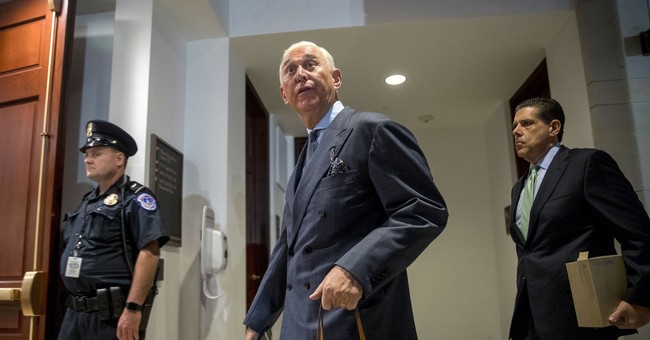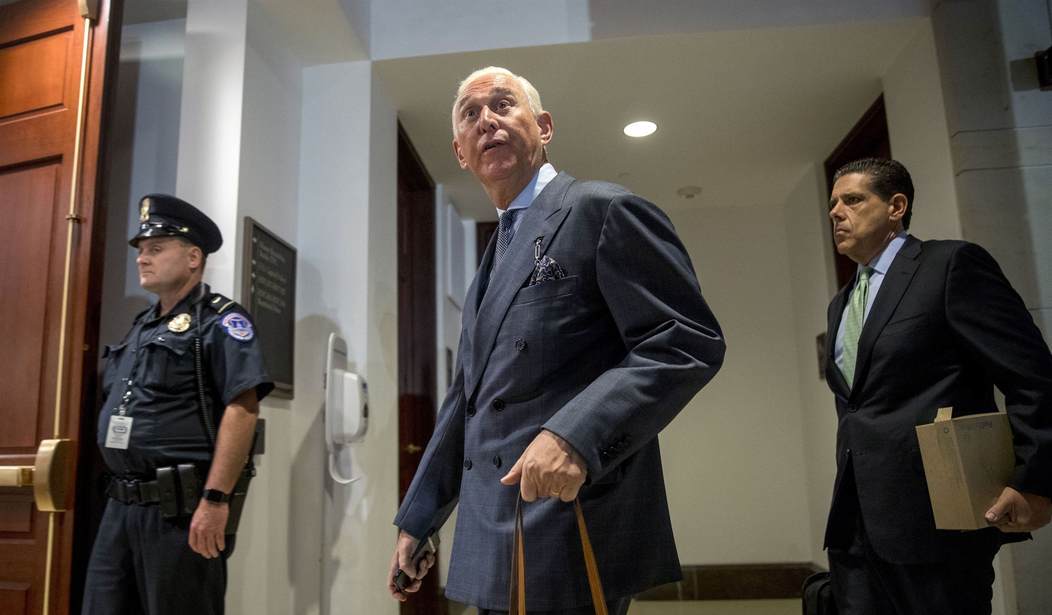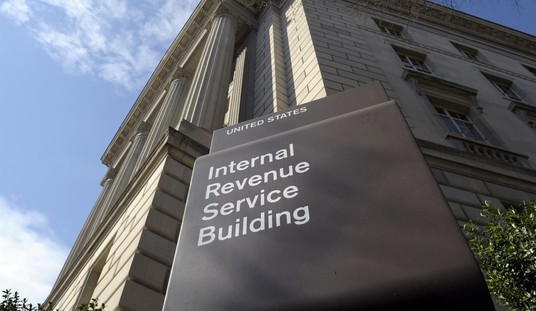
As has been widely reported since news broke Friday night, President Trump issued an Executive Order commuting the 40-month prison sentence imposed on Roger Stone following his conviction for obstructing Congress, witness tampering, and making false statements to Congress.
The judge who sentenced Stone, U.S. District Court Judge Amy Berman Jackson, has entered an Electronic Order in the case today directing the parties to provide to the Court no later than tomorrow a copy of the President’s Executive Order on the commutation.
MINUTE ORDER as to ROGER J. STONE, JR. In response to questions raised by the U.S. Probation Office, the parties are ORDERED to provide the Court by July 14, 2020 with a copy of the Executive Order commuting the defendant’s sentence and to address the question of the scope of the commutation, in particular, whether it involves the sentence of incarceration alone or also the period of supervised release. Signed by Judge Amy Berman Jackson on 7/13/20. (DMK)
In addition to sentencing Roger Stone to serve 40 months in the custody of the Bureau of Prisons, Judge Berman Jackson also sentenced Stone to serve a period of 24 months of “Supervised Release”. A generic term for what “supervised release” amounts to is “probation”, but in the federal system “probation” is a specific term that relates only to a period of court supervision following conviction when no sentence of imprisonment was imposed.
When there is a sentence of imprisonment imposed, federal law requires the defendant to also serve a period of “supervised release” at the conclusion of the prison term. This period is intended to provide supervision and assistance to a former inmate who is attempting to re-integrate him/herself back into the community to which they are released.
An inmate being released from federal custody is generally allowed to pick the community where he/she wants to live following their release, but they must show they have some connections to that community that will private them with a stable existence upon release. As a general practice, prisoners are released six months prior to the end of their term of incarceration, with that final six months being spent in a federal “half-way” house, which gives the released prisoner a place to live while they seek out employment and an apartment/house to move to when the six months is up. During this initial six months of release to a half-way house, the former inmate also begins their “relationship” with the Probation Officer assigned to them by the United States Probation Office.
Their Probation Officer oversees the “release plan” established for the former inmate. The Probation Officer will assist with finding employment, finding an apartment, making contact with friends and family who can provide assistance, etc.
But the Probation Officer is also responsible for monitoring the former inmate’s compliance with the “conditions” imposed by the Court on the former inmate during the period of “Supervised Release” that was imposed as part of the sentence. During that period, the former inmate is still deemed to be in the “custody” of the Court; they are just not required to serve this part of their “custody” in a facility operated by the Bureau of Prisons.
The types of conditions that are typically imposed on a federal prisoner can include 1) that he/she commit no violations of state or federal law; 2) that he/she consume no illegal drugs (and sometimes alcohol); 3) that he/she seek and maintain employment; 4) that he/she not move or absent him/herself from the judicial district where they are subject to supervision without the express permission of the Probation Officer; 5) that he/she submit to random drug testing; 6) that he/she be subject to random unannounced searches by the Probation Officer of their residence; and 7) that he/she not associate or meet with other convicted felons. This is not a complete list, but just examples of the “Standard Terms and Conditions of Release” that are imposed in almost every case. The Court can then fashion specific terms unique to a particular defendant.
If a Defendant violates any of the terms and conditions of release during the period of his Supervised Release, he is subject to a “Revocation Hearing” where the Court will determine whether the defendant should be incarcerated for a period of time — up to the full term of supervised release imposed — as a result of such violation. The revocation and incarceration are not automatic — there is a range of possible sanctions a judge can impose for such violations. But sending a defendant back to prison is one of the options available to address a violation of supervised release conditions.
Judge Berman Jackson’s Order today is seeking information as to whether the commutation of Roger Stone’s sentence applies only to the 40-month term of imprisonment she imposed, or whether it includes both the term of imprisonment and the term of supervised release of 24 months that he was also sentenced to serve.
The White House Counsel’s Office has attorneys in it who are former federal prosecutors. I would expect that they did not overlook the term of supervised release when drafting the terms of Stone’s commutation. If they did then the Executive Order should be modified, otherwise Roger Stone is not yet free of the threat of imprisonment resulting from his conviction.














Join the conversation as a VIP Member